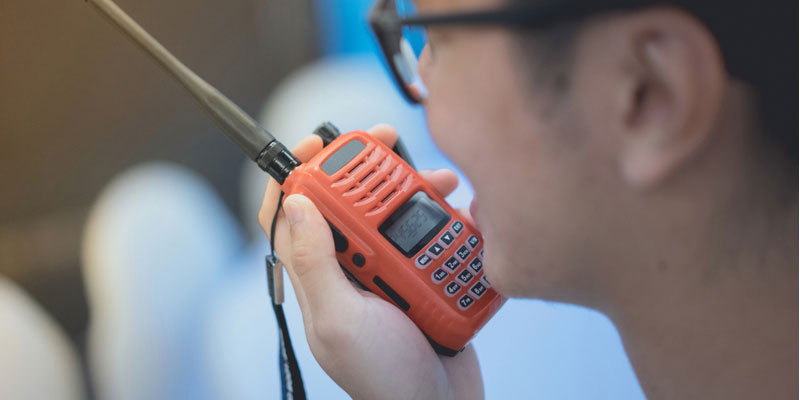The best two-way radio systems for yachts help keep everyone safe while enabling clear and consistent communication across the ship, and all the way back on land. Many things can go wrong out at sea, from ice blocking the designated route to rough currents that threaten to capsize a boat. If anything goes wrong, the ability to communicate is key to getting assistance in a timely manner. Hence, why two-way radios are a staple necessity onboard yachts, or any other type of vessel.
It goes without saying that mobile devices are not a viable option for communicating on a ship. For one, mobile devices do not work once you get a certain distance from the coast. Not to mention, they aren’t nearly as durable as marine two-way radios, which are specially designed to withstand elements found onboard a ship in normal and emergency conditions. Even if a boat is outfitted with the latest technology and GPS tracking systems, you still need two-way radios to enable clear and reliable communication.
What Makes a Great Two-Way Radio System for Yachts?
- Radios must be intrinsically safe
Marine VHF radios should be intrinsically safe, which means that the wiring of the equipment is designed to withstand high heat, dust, and water. In other words, even if something major goes wrong onboard a ship, the radio should still operate to communicate and alert the appropriate authorities.
- Radio operates on appropriate channels
Two-way radios must operate on the channels designated for marine communication.
- Radios are waterproof and dust resistant
Radios must be waterproof and resistant to dust, that means they are in a sealed case that offers protection against many elements. Waterproof two-way radios can withstand up to 30 minutes underwater at 9 to 10-foot depths. You can’t count on the radio to work while it’s underwater, not that you could talk underwater anyway, but it will work as soon as you bring it up to the surface.
- Radio includes an emergency alert button
All marine radios should be equipped with an alert button that can be used in an emergency to call for help. Some radios offer a feature that will sound an alarm if the device falls at a certain angle and is not moved within a certain period of time.
- Digital radios make an excellent option
Digital radios are commonly used on yachts because they offer several key benefits over analog radios, including more reliability out on the water. Digital radios can transmit over the Internet, which means you can talk to people around the world. In addition, they can access information such as water levels and location. You can even program radios to control equipment on a vessel, such as surveillance lights or other control features.
In addition, digital radios offer improved sound quality thanks to the fact they can tune out wind and other forms of background noise. They do so by translating your voice into neatly bundled digital data packages that are then sent out to the intended destination. Lastly, the battery life on digital radios tends to be better due to more efficient use of energy when compared to the analog radio. This is optimal if radios are in use all day or all night by crew members.
Find the Right Two-Way Radio for Your Yacht
Take trust in Highland Wireless! We know two-way radios and are more than happy to offer assistance and advice that’ll help you find the right radios for your team. In addition, we offer affordable radio rentals (including all necessary accessories) so you don’t have to buy radios. Instead, you can rent them as needed. Contact us today to learn more.





